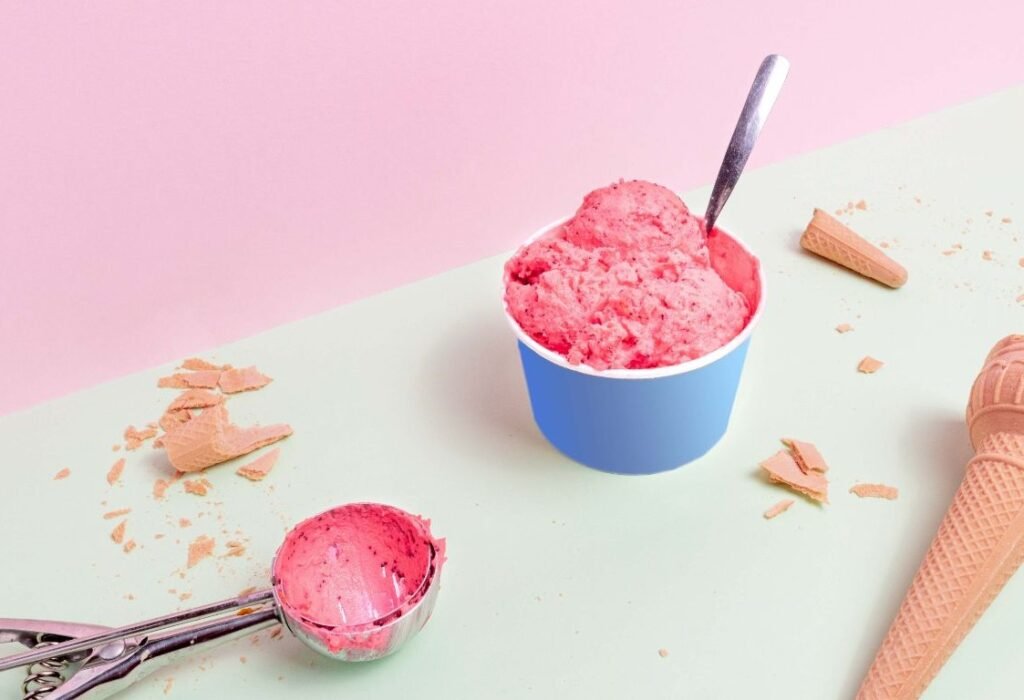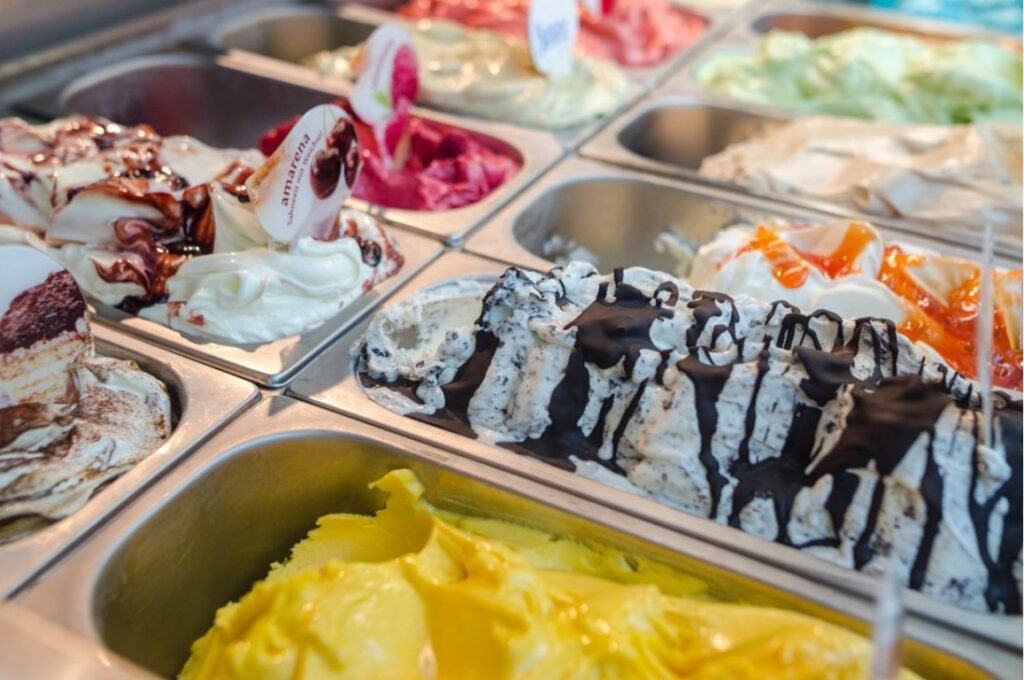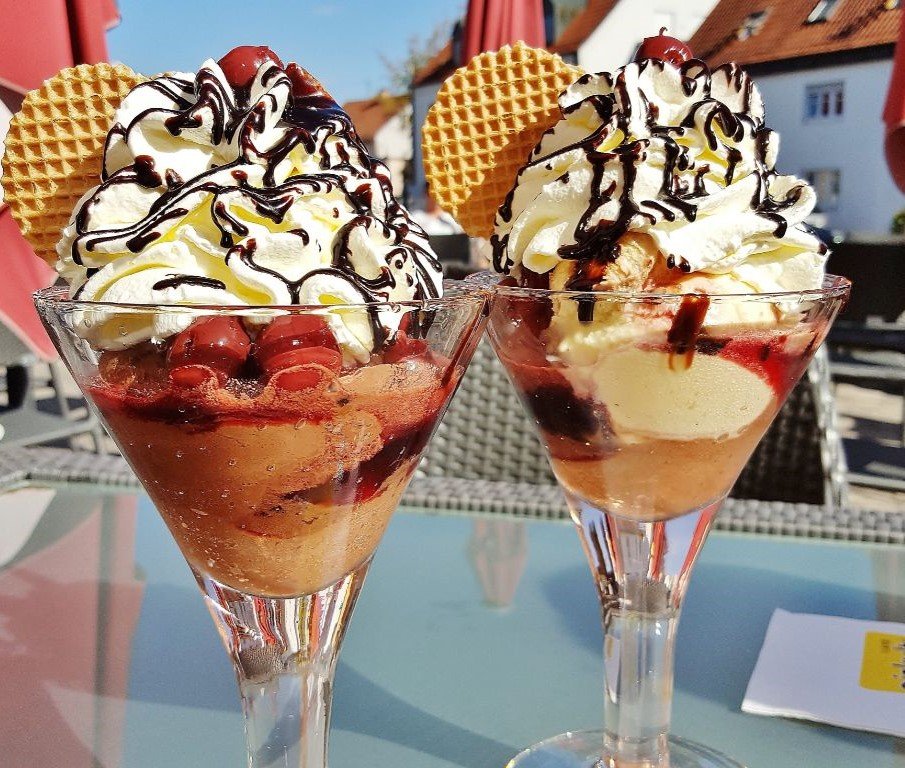Introduction to Homemade Ice Cream
Homemade ice cream is a delightful treat that offers a unique and customizable experience compared to its store-bought counterparts. The process of creating your own frozen dessert allows you to experiment with various flavors, textures, and ingredients, ensuring that every batch reflects your personal taste. The allure of making homemade ice cream goes beyond just flavor; it also encompasses the engaging experience of preparation, bringing joy and satisfaction to the cook.
One of the primary benefits of homemade ice cream is the ability to control the quality and quantity of ingredients. Many commercial ice cream brands contain preservatives, artificial flavors, and high levels of sugar, which can detract from the natural taste. By making your ice cream at home, you can opt for fresh, organic ingredients, and create recipes that cater to dietary restrictions or preferences, such as vegan or sugar-free options. This level of customization is simply unattainable with mass-produced varieties.
Commonly used ingredients in an ice cream recipe include cream, milk, sugar, and flavorings. Vanilla ice cream, for example, can be made by combining fresh cream, sugar, and pure vanilla extract, resulting in a rich, velvety base. Chocolate ice cream, on the other hand, can incorporate cocoa powder or melted chocolate to create a luscious, indulgent treat. The basic recipe can be adapted with ease, allowing for endless creativity. Fruits, nuts, and other add-ins can also be introduced to enhance the flavor and texture of your homemade ice cream.
The act of preparing ice cream together with family or friends can be a fun bonding experience. It invites creativity and collaboration in the kitchen, making it a rewarding activity. Embracing the art of homemade ice cream not only indulges your sweet tooth but also fosters an enjoyable connection with the joy of cooking.
Essential Ingredients for Ice Cream

Homemade ice cream is a delightful treat that can be crafted with just a handful of essential ingredients. Understanding the role of each component is crucial in developing an enjoyable texture and flavor, whether you aim to create vanilla or chocolate ice cream. The primary ingredients include cream, milk, sugar, and flavorings, each playing a vital role in the formulation.
Firstly, cream is indispensable when making ice cream, as it contributes to the richness and creaminess of the final product. The higher the fat content in the cream, the smoother and creamier your homemade ice cream will be. This characteristic is particularly important for achieving an indulgent mouthfeel, especially in recipes that feature bold flavors, such as chocolate ice cream. For those observing dietary restrictions, alternatives such as coconut cream or cashew cream can provide a similar consistency without dairy.
Next, milk is used to achieve the desired texture and manage the overall fat content. Whole milk is often favored, but you can adjust the proportion of cream to milk based on personal preference, recalling that a higher milk ratio yields a lighter texture. Non-dairy milk alternatives, such as almond milk or oat milk, can also be utilized, though adjustments in sugar content may be necessary due to varying sweetness levels.
Sugar acts as a sweetener and plays a pivotal role in lowering the freezing point of the mixture, allowing for a smoother end product. It is essential to use granulated sugar; however, alternatives like honey or agave syrup can also be employed. Lastly, flavorings are essential for imparting distinct tastes to your ice cream. Extracts such as vanilla or almond elevate the flavors, while fresh fruits or cocoa powder can provide unique profiles in an exciting homemade ice cream recipe.
Ice Cream Making Methods
Making homemade ice cream can be an enjoyable and rewarding experience, especially when considering the various methods available. Each approach has its distinct advantages and disadvantages, allowing individuals to choose one that best suits their needs and kitchen setup. The three primary methods are the use of an ice cream maker, the no-churn technique, and utilizing a food processor.
The most traditional method involves an ice cream maker. This device churns the mixture while simultaneously freezing it, resulting in a smooth texture and rich flavor. Homemade ice cream prepared this way typically turns out more creamy due to the constant aeration the machine provides. However, these machines can vary widely in price and size, making them less accessible for some home cooks. Additionally, one must plan ahead, as many ice cream makers require the mixing bowl to be pre-frozen.
Conversely, the no-churn method is an excellent option for those who prefer simplicity and speed. By simply combining heavy cream, sweetened condensed milk, and flavorings, one can create a delightful base without any specialized equipment. This method is particularly popular for quick vanilla ice cream or a chocolate ice cream variation. The final texture is slightly different, often denser, but many find the ease of preparation outweighs any textural differences.
Another effective technique is using a food processor. This method involves blending frozen fruits—such as bananas, berries, or avocados—with a base of full-fat yogurt or cream to create a soft serve-like consistency. This option is particularly healthy, providing an alternative to traditional ice cream while still satisfying the craving for something sweet. However, the texture may not match that of old-fashioned ice creams, especially when freezing after blending.
Ultimately, the best method for homemade ice cream depends on one’s preferences, available tools, and time constraints. By evaluating these various approaches, one can enjoy crafting delicious homemade ice cream tailored to personal tastes.
Basic Ice Cream Recipe
Making homemade ice cream can be a delightful process, especially when starting with a classic vanilla ice cream recipe. This fundamental recipe serves as a foundation from which various flavor profiles can be derived, making it a versatile choice for ice cream enthusiasts. To create the ideal creamy texture that everyone craves, follow the step-by-step instructions outlined below.
Begin by gathering your ingredients: 2 cups of heavy cream, 1 cup of whole milk, 3/4 cup of granulated sugar, and a pinch of salt. For the vanilla flavor, you will need 1 tablespoon of pure vanilla extract. In a large mixing bowl, combine the heavy cream, milk, sugar, and salt. Whisk the mixture until the sugar has completely dissolved, which should take around 2-3 minutes. Once combined, stir in the vanilla extract.
After preparing the base, cover the bowl with plastic wrap and refrigerate it for at least 2 hours. This chilling step is crucial, as it ensures the mixture is cold before being churned, leading to a smoother texture in the final product. For those seeking flavors beyond vanilla, consider adding cocoa powder for chocolate ice cream or crushed fruits for a refreshing variation.
Once the base is sufficiently chilled, pour the mixture into an ice cream maker. Follow the manufacturer’s instructions for churning, typically requiring 20-30 minutes. The ice cream is done when it has reached a soft-serve consistency. For a firmer texture, transfer the churned ice cream into an airtight container and freeze it for an additional 2-4 hours.
Experimenting with mix-ins or flavor adjustments after the initial churning can also elevate your homemade ice cream. This basic ice cream recipe provides a blank canvas, allowing each maker to create their own unique version of a beloved treat. Whether you prefer classic vanilla or opt for a chocolate ice cream variation, the possibilities are many. Enjoy the process, and savor the delightful results!
Flavoring Your Ice Cream

Flavoring homemade ice cream opens up a world of possibilities, allowing you to craft unique flavors that cater to your personal taste preferences. Traditional options like vanilla and chocolate ice cream remain timeless favorites, drawing in aficionados with their creamy textures and rich flavors. Vanilla ice cream serves as a versatile base, perfect for enhancing with additional ingredients. Consider stirring in crushed cookies or fresh fruit to elevate its flavor profile.
When it comes to chocolate ice cream, the combination of rich cocoa powder or melted dark chocolate creates a decadent dessert. For a more complex flavor, try adding a splash of espresso or a hint of chili powder for an unexpected twist. Incorporating these elements not only deepens the flavor but also adds an element of surprise to each scoop.
For those eager to experiment beyond conventional flavors, a variety of innovative options awaits. Infusing your ice cream with herbs such as mint or lavender can yield refreshing results. To achieve this, simply steep the herb in your cream mixture before incorporating it into your ice cream recipe. This technique ensures that the essential oils fully permeate the mixture, resulting in a delightful infusion of flavors. Additionally, more adventurous options like salted caramel or chai spice can provide distinct and memorable experiences.
Timing is crucial when incorporating flavors into your homemade ice cream. For chunky ingredients, such as nuts or fruits, folding them in during the last few minutes of churning ensures that they remain intact rather than becoming overly blended. Conversely, liquid flavorings, like vanilla extract or syrups, should be added to your base mixture before the churning begins. This order of operations guarantees an even distribution of flavors throughout the ice cream.
Experimenting with various flavorings not only produces custom-made delights but also deepens your culinary skills in the ice cream-making process.
Add-Ins and Mix-Ins
When creating the perfect batch of homemade ice cream, selecting the right add-ins and mix-ins can significantly enhance the overall flavor and texture. Popular choices include fruits, nuts, candies, and even flavored syrups. For instance, incorporating fresh berries or chunks of ripe bananas can add a refreshing twist to a classic vanilla ice cream recipe. Alternatively, crushed cookies or chocolate chips can contribute an exciting crunch to a decadent chocolate ice cream.
It is essential to consider the size and composition of your mix-ins. Chopping larger items into smaller pieces can make them easier to incorporate into the mixture without disrupting the freezing process. Additionally, softer items, such as caramels or marshmallows, can be gently folded in at the end of the churning process. This technique ensures that they are evenly distributed without compromising the creaminess and texture of your homemade ice cream.
When using fruits as add-ins, it is advisable to freeze them beforehand. This practice not only helps in maintaining the ice cream’s overall consistency but also prevents the mixture from becoming too watery as the fruits thaw during the churning process. If you happen to have leftover mix-ins, storing them properly can allow you to experiment with new flavors in future batches. Airtight containers are ideal for keeping items fresh, and labeling them can help keep track of what you have available.
Incorporating various mix-ins and add-ins into your homemade ice cream not only enhances the taste but also personalizes the experience. By experimenting with different combinations, you can discover exciting new textures and flavors, making every scoop truly unique. This way, your homemade ice cream can always be an adventure waiting to be explored.
Troubleshooting Common Issues
Creating homemade ice cream can be an enjoyable experience, but it often comes with its share of challenges. A common issue home makers encounter is icy texture. This is often the result of incorporating too much air into the mixture or not chilling the base thoroughly before churning. To address this, ensure that the ice cream base is well-chilled, ideally overnight, to encourage a smoother consistency once churned. When using an ice cream maker, avoid over-churning, as this can also contribute to ice crystals forming.
Another frequent problem is achieving the right consistency. Ice cream should be firm enough to hold its shape but soft enough to scoop easily. If your homemade ice cream is too soft, it may not have been churned long enough, or perhaps it lacks sufficient stabilizers. To improve the texture, consider adding cream or egg yolks to your ice cream recipe, which can enhance creaminess and help achieve that desired firmness. On the other hand, if the mixture ends up too hard, it may require a bit of time on the countertop before serving, allowing it to soften just enough for optimal scooping.
Uneven flavors can also diminish the homemade ice cream experience. This issue often arises when flavorings are not adequately mixed or distributed. To prevent this, it’s essential to ensure that all ingredients are thoroughly blended before freezing. When preparing vanilla or chocolate ice cream, add flavoring agents gradually, continuously tasting to achieve balance. Using quality ingredients, like real vanilla beans or high-quality chocolate, can also significantly enhance the overall flavor. Addressing these common problems can lead to a more enjoyable ice cream-making process and better results for your next homemade batch.
Storing and Serving Homemade Ice Cream
Preserving the quality of homemade ice cream is crucial for ensuring its delightful texture and flavor. Proper storage techniques can significantly extend the enjoyment of your homemade treats, whether you have created a classic vanilla ice cream or a rich chocolate ice cream. Opt for air-tight containers made from glass or plastic that can withstand freezing temperatures. When placing your ice cream in these containers, it’s advantageous to leave minimal air space at the top. This reduces the likelihood of ice crystals forming, which can compromise the creamy consistency of the ice cream.
To further protect your homemade ice cream from freezer burn, consider covering the surface with parchment paper or plastic wrap before sealing the container. This additional layer acts as a barrier against moisture in the freezer, ensuring that your icy creations remain fresh and flavorful. Homemade ice cream can generally be stored for two to three weeks, although some flavors may last longer. Always check for the presence of ice crystals or off odors before serving.
When it comes to serving homemade ice cream, the possibilities for enhancement are manifold. Begin by allowing your ice cream to soften at room temperature for about five to ten minutes, making it easier to scoop and serve. Pairing your ice cream with garnishes can elevate the experience; consider topping vanilla ice cream with caramel sauce, fresh fruit, or chopped nuts for added texture and flavor. For chocolate ice cream, a drizzle of fudge or a sprinkle of sea salt can contrast beautifully with the richness of the flavor.
Moreover, serving homemade ice cream in waffle cones or bowls adds to the visual appeal. To create a more indulgent dessert, serve scoops atop warm brownies or pancakes. These thoughtful touches will enhance the overall enjoyment of your homemade ice cream, making each serving a memorable occasion.
Conclusion and Encouragement to Experiment
Homemade ice cream offers a delightful opportunity to explore diverse flavors and textures, surpassing store-bought options in creativity and freshness. As we conclude this ultimate guide, we encourage you to experiment with various ice cream recipes, allowing your taste preferences to guide your culinary adventure. Whether you lean towards a classic vanilla ice cream or opt for a bold chocolate ice cream, the possibilities are virtually endless.
Utilizing seasonal fruits, unique spices, or even incorporating your favorite desserts can elevate your homemade ice cream to new heights. Have you considered adding a swirl of caramel or infusing your mixture with herbal notes? These innovative approaches not only enhance flavor but also allow you to personalize your creations, resulting in a memorable treat that reflects your unique palate.
Moreover, experimenting with different techniques can yield exciting results. From custard-based to no-churn methods, each approach can impact the final product’s texture and taste. Don’t hesitate to vary the ingredient ratios or incorporate mix-ins that infuse character and style into your treats. As you navigate your way through this sweet journey, we recommend documenting your process as a way to learn and refine your recipes over time.
Sharing your homemade ice cream creations with friends and family adds an enjoyable social element to the experience. Invite loved ones for a taste-testing session or engage them in the ice cream-making process, fostering a sense of community and collaboration. Your experiences will inspire others to embark on their own ice cream crafting adventures, creating a sweet ripple effect that can permeate your social circles.
In conclusion, the art of making homemade ice cream is not only about enjoying delicious treats but also about exploring your creativity and sharing joyful moments with those around you. So, gather your ingredients and tools, and dive into the rewarding experience of crafting your very own ice cream masterpieces.


